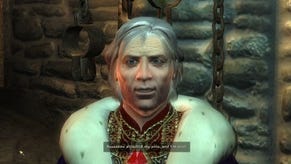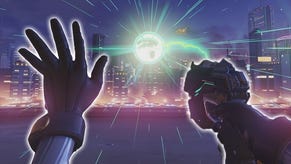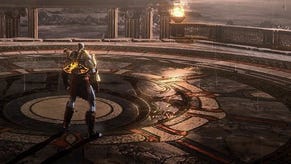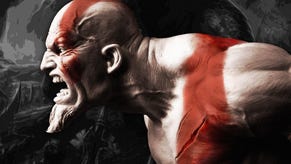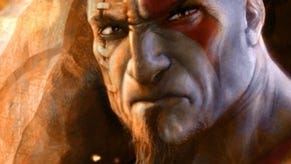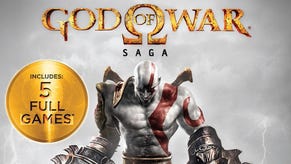God of War III
Bye, Zeus.
Although I doubt you could count on Kratos to guide you through your Classics GCSE, it's hard to think of many other games that understand their source material as well as God of War. Sony's audience, like Homer's, is looking for the release that violent heroics can bring, an escape from drudgery into a vivid world where the emotions haven't been simplified so much as heightened.
Just look at the animations: whether it's opening a chest or opening someone's chest, Kratos puts everything into it. Shoulders quiver and shudder, knees buckle under the strain, there's audible grunting. He gives it his all, and, on the other side of the TV screen, so will you.
And so has Santa Monica Studios. With God of War III, fans of the series will find a game that's been refined and expanded. The basic approach, including the combat system, level flow and pacing of bosses and puzzles remains largely untouched. But everything's bigger, grander and more elaborate.
That said, the story of God of War III couldn't be simpler: the game is basically about climbing a mountain to kill the man that lives at the top. The fact that the mountain is Olympus, the man at the top is Zeus, and things kick off with a boot in the face that drops you all the way back down to Hades only adds to the enjoyment.

It's not BioShock, in other words, but such a loose framework has given the developer the chance to let rip with the detailing - and the detailing is beautiful stuff. True to the standards set by the previous instalments, this is a staggeringly good-looking game. Set-pieces are gigantic but artful, consumed with sweeping arcs of the camera and huge, intricate environments, while the sky overhead is latticed by flaming comets and boiling wreckage as heaven itself comes apart.
The animation is brutal, but never less than graceful: characters leap and dodge like murderous ballerinas, and bust into wet pieces as if there's an Olympic Gold available for Most Attractive Dismemberment. The locations take you from the brewing black pits of Hades, where bodies of the corrupted fall through the sky in a manner that provides a queasy spin on a certain seventies disco classic, to the rippling, art nouveau corridors of Poseidon's house. And if you can even notice the frame-rate amid this particle-heavy carnage, you'll realise that it never falters.
All this tech and artistry has been devoted to a very basic pleasure: kill absolutely everything on-screen. The thing you have to understand about Kratos, right, is that he can yank a person's head off. No, actually, the thing you have to understand is that he does this all the time: it's an enterprise he finds himself involved in sufficiently often that it probably doesn't even crop up in his Monday afternoon psychotherapy sessions any more.
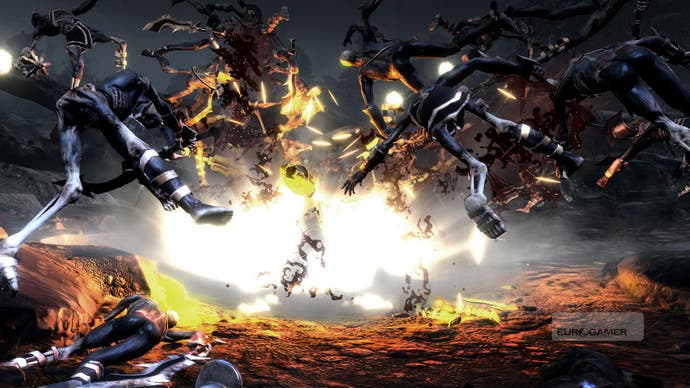
So angry at the world that he's literally purple, God of War's vengeful Spartan is almost comically deadly. His has always been a world drawn entirely in black and white. OK, and red. It's a place with no need for an in-game morality system; early on in part III, crawling along a flaming ledge, Kratos spots a peasant, surrounded by flames and steep drops, waving for help with a button prompt floating overhead. The option to be nice? This is new. Not really - that prompt isn't to lift him to safely, but to mash his face against the wall. Good work.
That kind of casual capacity for butchery means that God of War III has to begin where most games end: it has to deliver on a level of ghoulishly thrilling spectacle other titles have the time to steadily build up towards, and it has to do this pretty much all of the time, without it ever getting dull. It has to be insistent rather than shrill, epic rather than merely bombastic. Santa Monica Studios has done that, and then some besides.
Where it begins, in fact, is where God of War II ended, with a failed assault on Mount Olympus: a twisty ramble up a pathway that turns out to be the arm of Gaia, the Titan, followed by a fight against a towering mini-boss crab with a horse's head. It's vibrant and vicious, topping the famous opening to the previous game: gore splashes through the air with each strike, the ground is constantly shuddering, attack formations shift unexpectedly, and, when the beast finally dies, it bows out with an astonishing showering of intestines and fireworks. Phew. That's the first two minutes done.

